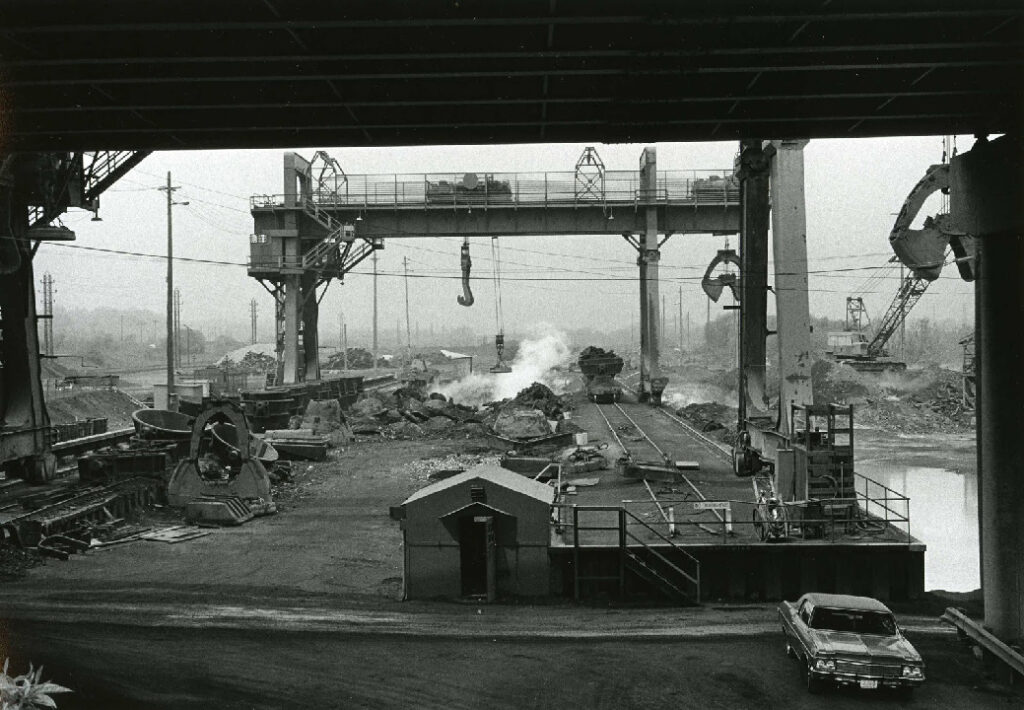Another group, almost an essay, of pictures taken while visiting my home town, Youngstown, Ohio. Our father had had a heart attack and survived and Frank and I went back to see him and mom. Frank drove me around and we visited childhood haunts and looked at the mills. Which is what the landscape in Youngstown was.
After living in New York we could see that Youngstown had little to offer us. I used 4×5 and 35mm cameras and shot only black and white. I was pleased with the way some of pictures came out. Just as I expected.
The landscape of twentieth century America had a visual fascination for me. Steel mills, other factories both working and abandoned, railroads, locomotives, flatcars, reefers, smoke stacks, all of that and more. I felt at home among workers. In strange towns I gravitated to places where workers ate and drank and bought work clothes and the ethnic neighborhoods they lived in. I still feel that way.
No doubt because of the enchantment generated by looking at the work of Eliot Porter, Bret and Edward Weston, Ansel Adams nature photography became a more satisfying project. Using mostly large format I was firmly in the f64 school. Sharp with a long range of tones was my goal.


